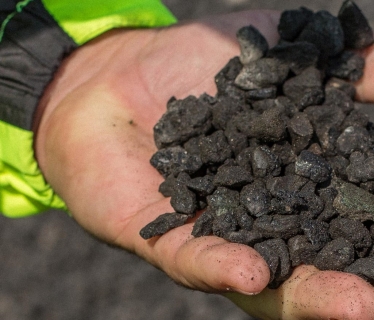
Reclaimed Asphalt Pavement (RAP)
With prior analyses—particularly of the composition of the recycled materials (bitumen, etc.)—and possibly after screening to convert the recycled materials into aggregate, RAP can be processed using a cold-mix technique, primarily with a bitumen binder treatment.
Recycling of old pavement layers
The environment is more and more a topical issue, the recycling of old pavement layers has developed a lot in recent years. In place or in power stations provided for this purpose.
Since the first discussions, recycling techniques have grown considerably in the field of road manufacturing and maintenance.
This maintenance involves milling the old layers of pavement: this leads to the production of waste, the costs of asphalt in large quantities.
Two treatment methods
- The most used at present: The valuation is done by the reuse of raw aggregates or after crushing (RAP), most for backfilling.
- Evolving today: the use of RAP in an industrial process leading to the development of a new product. This still represents only a very small part of waste treatment. This recycling makes it possible to reduce the quantities of new materials to bring.
Different processes
- Hot process, with the production of a traditional mix usually incorporating 10 to 15% aggregates (and up to 40-50% in some cases),
- Cold where milled material (also called Reclaimed Asphalt Pavement "RAP") are treated with a hydrocarbon binder (emulsion or bitumen foam) or, more rarely, with a hydraulic binder (cement or road binder).
On-site recycling is also a solution compared to plant recycling. Examples:
- Hot plants, can integrate between 20 to 50% of RAP,
- Cold plants can integrate 100% of RAP
- On-site hot and cold recycling trains (or workshops) incorporating all equipment to re-spread recycled material.

